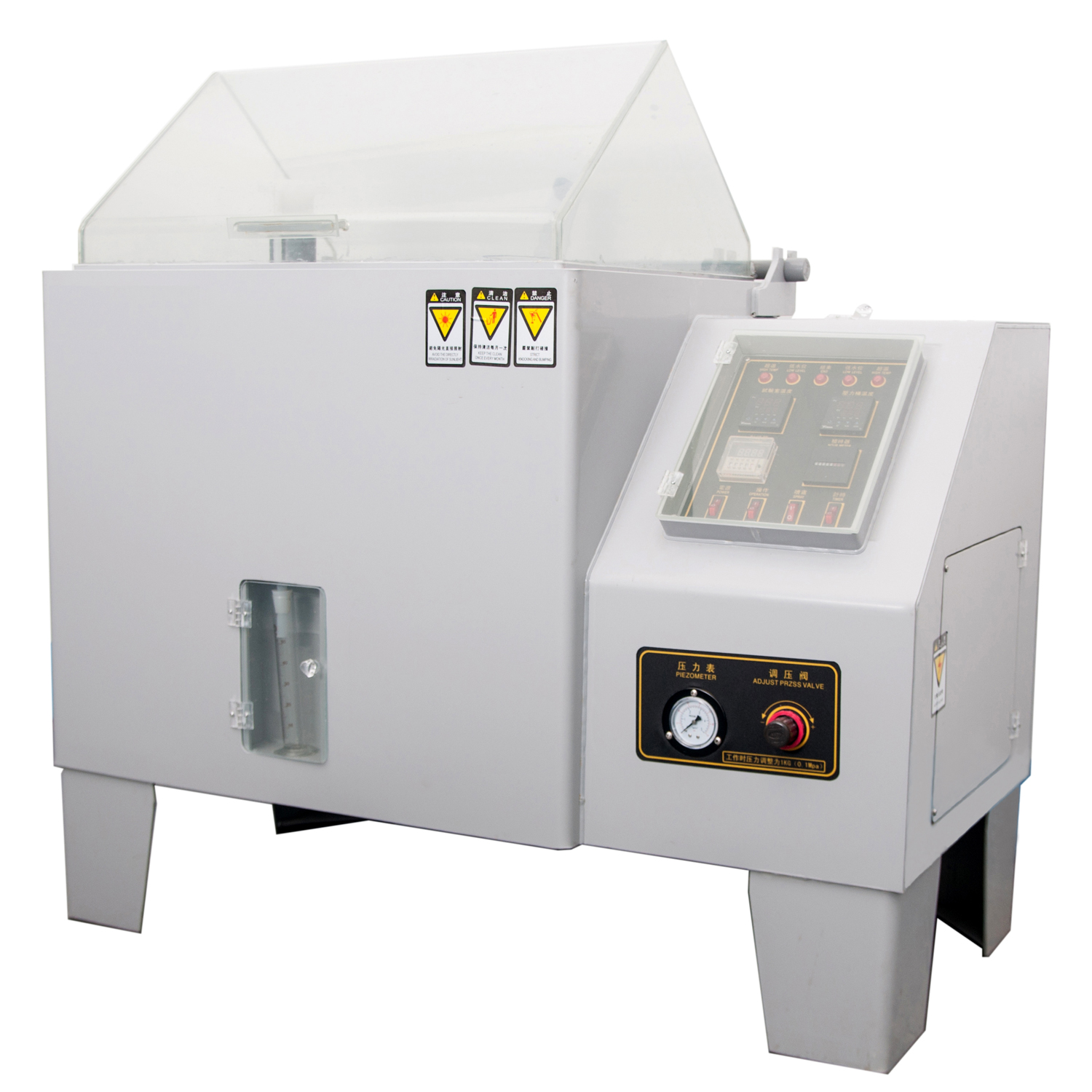ASTM B117 Salt spray test apparatus chamber for a salt spray (fog) corrosion test
Salt spray testing is one of the most critical methods for assessing surface treatment, coatings, and the corrosion resistance of metals, as well as ensuring product durability. All UnitedTest strictly adheres to ASTM B117, which is the globally recognized standard for salt spray testing. Standardized tests are conducted in a controlled environment to determine the corrosion resistance of materials, and it is commonly used in the automotive, aerospace, and manufacturing industries.With the help of ASTM standards, manufacturers like us provide accurate and stable test results, enabling our clients to improve product quality, extend service life, and ensure compliance with industry standards.
ASTM refers to the American Society for Testing and Materials, which provides standard practice for environmental and engineering services. The ASTM B117 is one of the most common standards for the salt spray test that defines certain parameters and specifications to perform the salt spray test in specific environmental conditions. This standard practice for operating salt spray apparatus must be followed by various industries, including –
Aerospace and aircraft
Automotive manufacturing
Construction and building materials
Infrastructure, such as water and sewer pipes
ASTM B117 is not restricted to salt spray operations only but also outlines the best practices for apparatus requirements, types and preparation of test specimens, temperature conditions, the timeline of the exposure period, etc.

Scope of Standard Practice
The scope of ASTM B117 standard practice in various industries regarding the operation and testing procedure of salt spray test. The standards work as the guidelines for the technicians or operators that include the following important clauses –
1.1 This practice describes the apparatus details, procedure, and conditions for creating and sustaining the salt spray (fog) test environment.
1.2 This practice does not feature the test specimen shape or exposure times to be used for a specific product or the interpretation to be placed on the results.
1.3 The values in SI units are to be regarded as standard. The values in parentheses are for information purposes only.
1.4 This standard does not significantly cover all of the safety concerns, if any, associated with its use.
The effect of salt spray on products:
The effects of product exposure to salt spray environment are divided into corrosion effects, electrical effects, and physical effects:
a)、 Electrochemical corrosion and accelerated corrosion caused by other stresses;
b)、 Corrosion of acid/alkali solutions formed by ionization of salt in water.
c)、 The settling and accumulation of salt spray on the surface and gaps of electronic products can lead to a decrease in electrical performance;
d)、 The settling and accumulation of salt spray will generate new conductive layers, causing short circuits;
e)、 Corrosion of electrical insulation materials.
f)、 The settling and accumulation of salt spray can cause blockage and adhesion of mechanical components and moving parts of components;
g)、 Electrolysis causes blistering or peeling of the protective paint layer.
Salt spray test
Test objective: To assess the ability of materials to resist salt spray corrosion.
Test types: Neutral salt spray test NSS test, Acetic acid salt spray test AASS test, Copper accelerated acetic acid salt spray test CASS test, Alternating salt spray test, Advanced cyclic corrosion test
Severity level: solution concentration, pH value, salt spray deposition, duration
Evaluation methods: corrosion characteristics, corrosion area, weight changes, experience
Salt spray test type
(1) The neutral salt spray test (NSS test) is one of the earliest and most widely used accelerated corrosion testing methods. It uses 5% sodium chloride saline solution, and the solution PH value is adjusted in the neutral range (6-7) as the solution for spray. The experimental temperature is set at 35 ℃, and the settling rate of salt spray is required to be between 1-2ml/80cm2. h. Generally applicable to metals and their alloys, metal coatings (anodic or cathodic), conversion coatings, anodic oxide coatings, and organic coatings on metal substrates.
(2) The acetic acid salt spray test (AASS test) was developed based on the neutral salt spray test. It involves adding some glacial acetic acid to a 5% sodium chloride solution to lower the pH value of the solution to around 3, causing the solution to become acidic. The resulting salt spray also changes from neutral to acidic. Its corrosion rate is about three times faster than the NSS test.
(3) The Copper Accelerated Acetic Acid Salt Spray Test (CASS Test) is a recently developed rapid salt spray corrosion test abroad. The test temperature is 50 ℃, and a small amount of copper salt - copper chloride - is added to the salt solution to strongly induce corrosion. Its corrosion rate is approximately 8 times that of the NSS test. Suitable for copper nickel chromium decorative coatings, nickel chromium decorative coatings, and anodized aluminum coatings.
(4) The alternating salt spray test is a comprehensive salt spray test, which is actually a neutral salt spray test plus a constant humidity and heat test. It is mainly used for cavity type whole machine products. Through the infiltration of humid environment, salt spray corrosion not only occurs on the surface of the product, but also inside the product. It alternately converts the product between salt spray and humid and hot environments, and finally assesses whether the electrical and mechanical properties of the entire product have changed.












